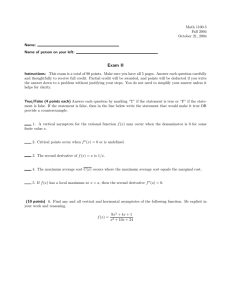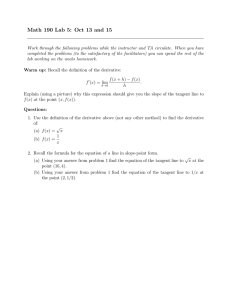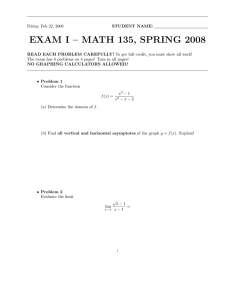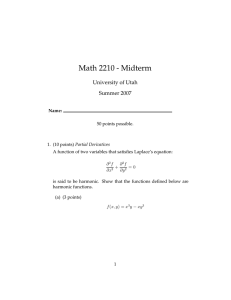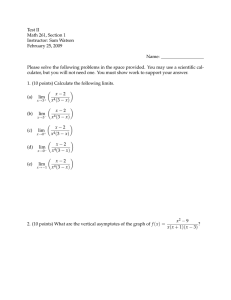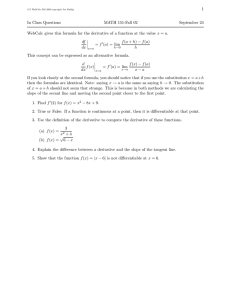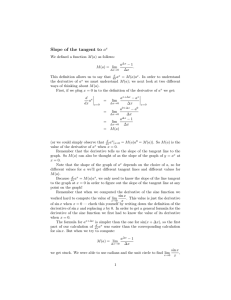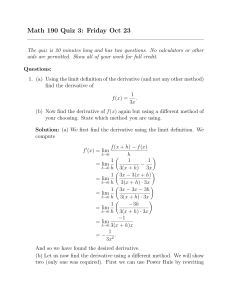Derivatives a = lim if the limit exist.
advertisement
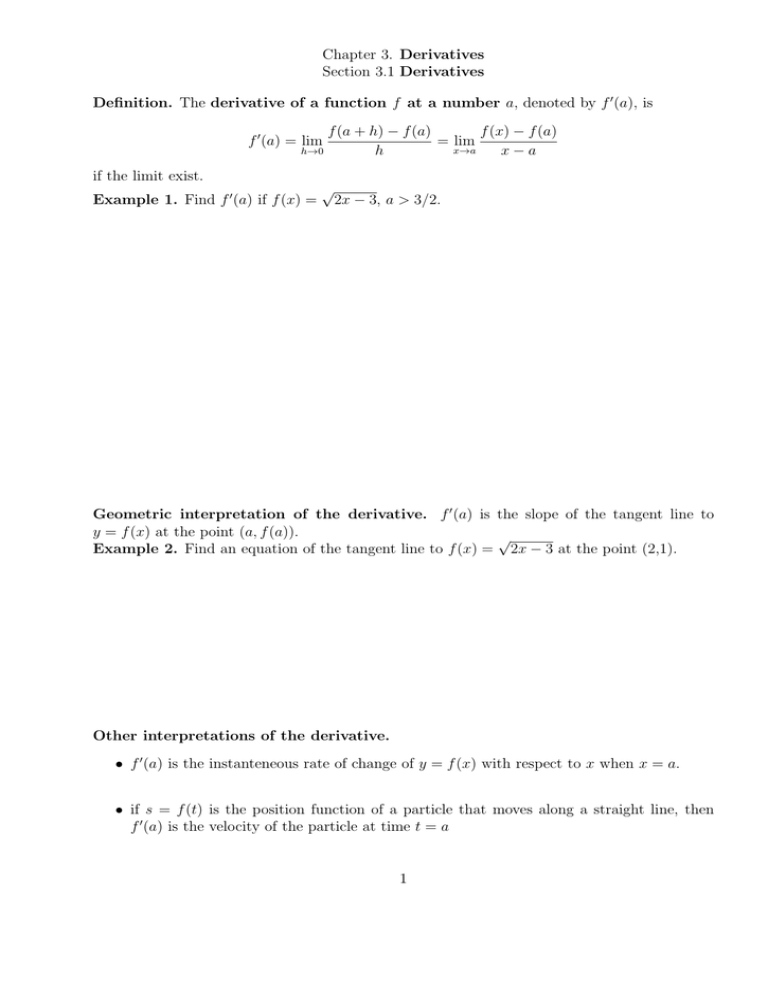
Chapter 3. Derivatives Section 3.1 Derivatives Definition. The derivative of a function f at a number a, denoted by f ′ (a), is f (a + h) − f (a) f (x) − f (a) = lim x→a h→0 h x−a f ′ (a) = lim if the limit exist. Example 1. Find f ′ (a) if f (x) = √ 2x − 3, a > 3/2. Geometric interpretation of the derivative. f ′ (a) is the slope of the tangent line to y = f (x) at the point (a, f (a)). √ Example 2. Find an equation of the tangent line to f (x) = 2x − 3 at the point (2,1). Other interpretations of the derivative. • f ′ (a) is the instanteneous rate of change of y = f (x) with respect to x when x = a. • if s = f (t) is the position function of a particle that moves along a straight line, then f ′ (a) is the velocity of the particle at time t = a 1 A function f (x + h) − f (x) h→0 h f ′ (x) = lim is called the derivative of f . Definition. A function f is differentiable at a if f ′ (a) exists. It is differentiable on an open interval (a, b) if it is differentiable at every number in the interval. Example 3. Where is the function f (x) = |x − 2| differentiable? Theorem. If f is differentiable at a, then f is continuous at a When is the function not differentiable at x = a? • f has a ”corner” or ”kink” at a • f is discontinuous at a • the curve y = f (x) has a vertical tangent line at x = a 2
